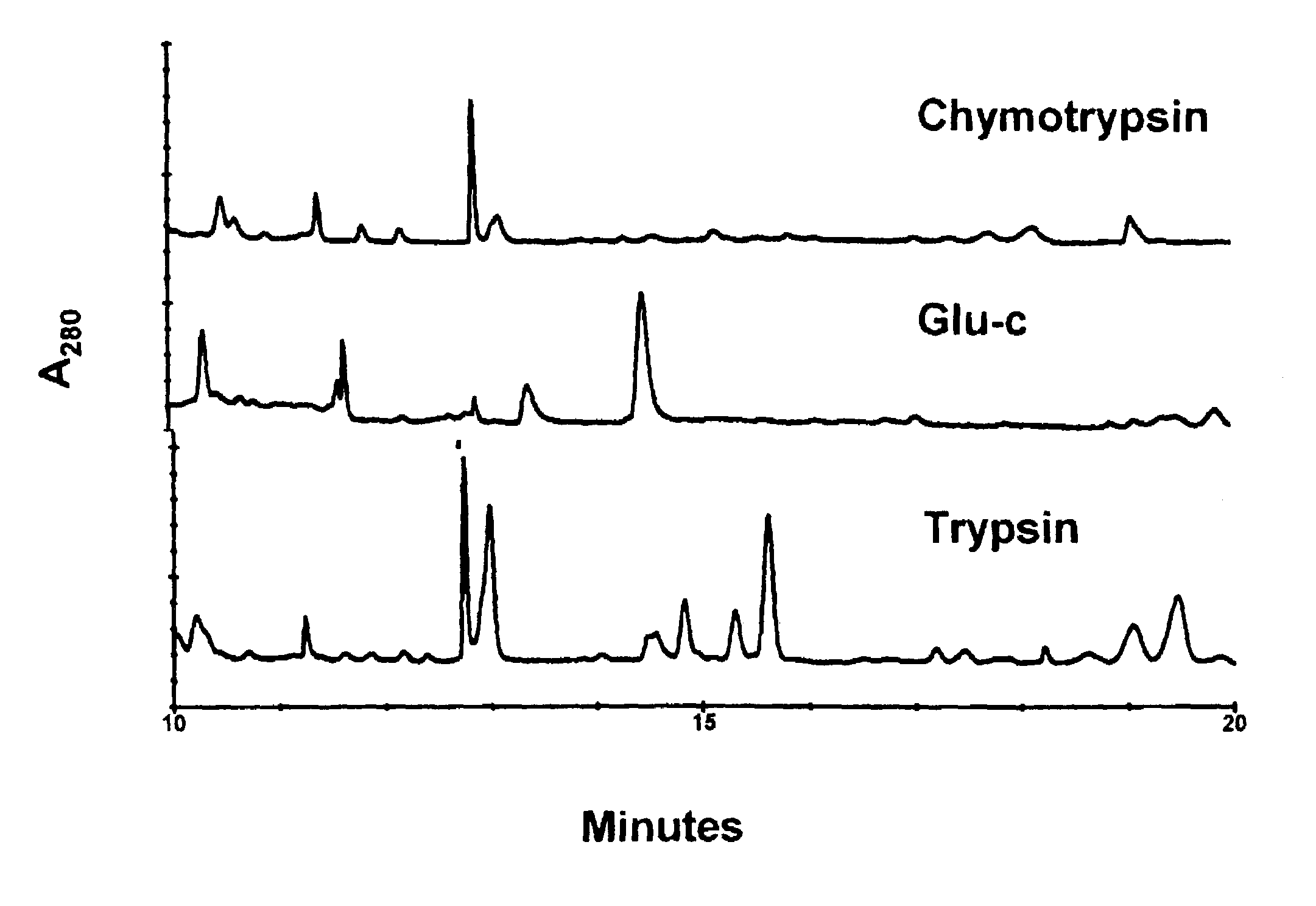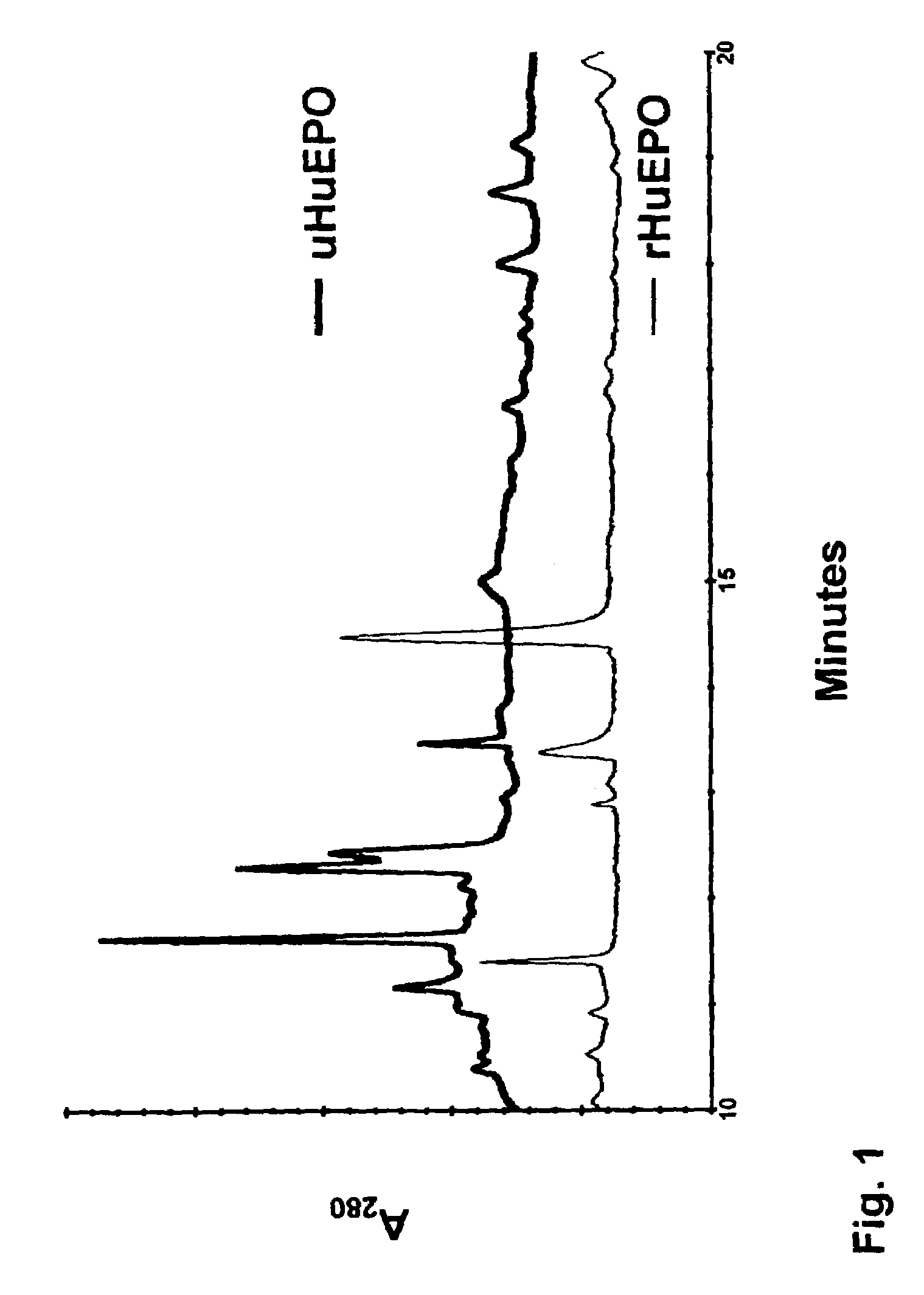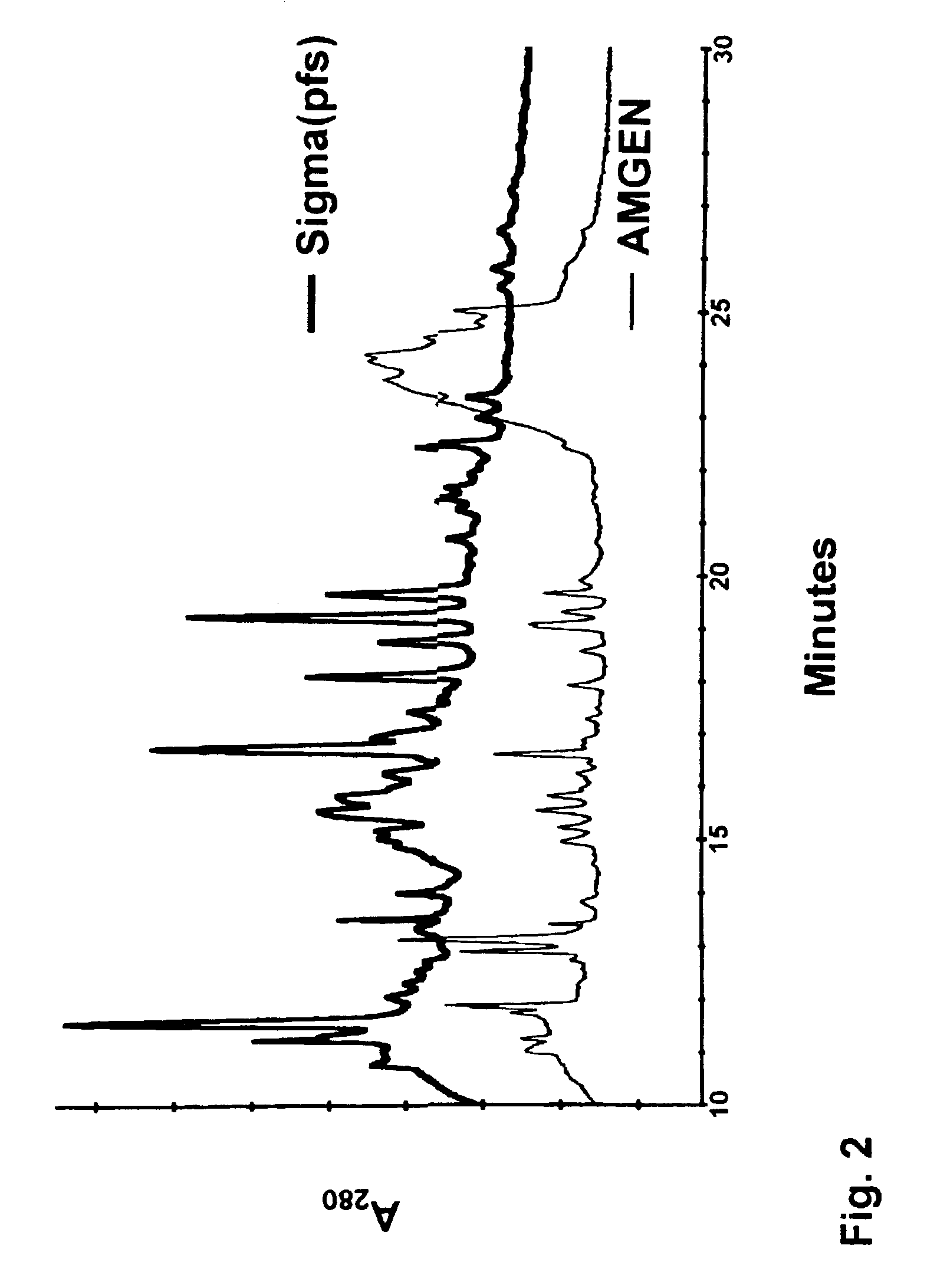Determination of recombinant glycosylated proteins and peptides in biological fluids
a technology of glycosylated proteins and biological fluids, applied in the field of detection of drugs, can solve the problems of increasing the chance of detection, difficult to detect steroids, and less attractive steroid us
- Summary
- Abstract
- Description
- Claims
- Application Information
AI Technical Summary
Benefits of technology
Problems solved by technology
Method used
Image
Examples
Embodiment Construction
[0026]The following description is provided to enable any person skilled in the art to make and use the invention and sets forth the best modes contemplated by the inventor of carrying out his invention. Various modifications, however, will remain readily apparent to those skilled in the art, since the general principles of the present invention have been defined herein specifically to provide a method of distinguishing recombinant peptides from native peptides.
[0027]The microheterogeneity of rHuEPO has been investigated by capillary electrophoresis (21, 22). The separations there were based on the molecular charge heterogeneity of EPO in serum. Capillary electrophoresis may be a good means to differentiate between rHuEPO and endogenous EPO; however, it does not have the sensitivity that is potentially available by ELISA. This means that electrophoresis is unlikely to be useful in monitoring urine and other body fluids, at least without significant concentration of glycopeptides pri...
PUM
 Login to View More
Login to View More Abstract
Description
Claims
Application Information
 Login to View More
Login to View More - R&D
- Intellectual Property
- Life Sciences
- Materials
- Tech Scout
- Unparalleled Data Quality
- Higher Quality Content
- 60% Fewer Hallucinations
Browse by: Latest US Patents, China's latest patents, Technical Efficacy Thesaurus, Application Domain, Technology Topic, Popular Technical Reports.
© 2025 PatSnap. All rights reserved.Legal|Privacy policy|Modern Slavery Act Transparency Statement|Sitemap|About US| Contact US: help@patsnap.com



